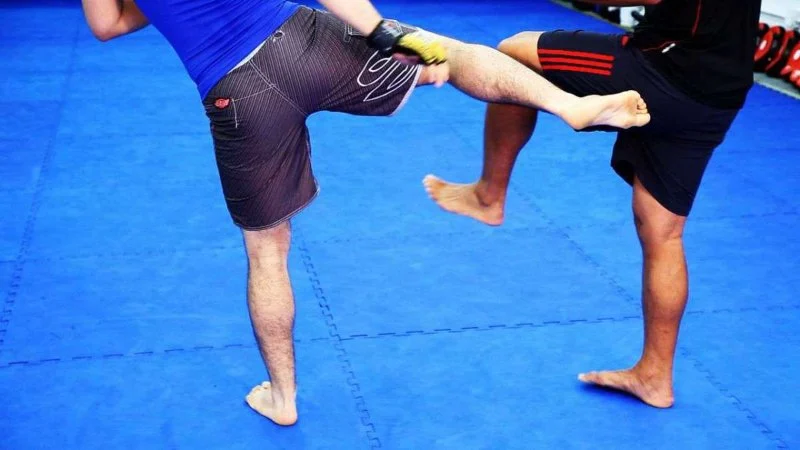
- 1. Understanding the Sliding Back Kick
- 2. Steps to Execute a Sliding Back Kick
- 3. Timing and Distance Considerations
- 4. Common Mistakes and How to Avoid Them
- 5. Real-Life Examples of Sliding Back Kicks in Action
1. Understanding the Sliding Back Kick
The sliding back kick is a powerful and effective technique used in martial arts, particularly in Taekwondo. It involves sliding forward towards an opponent and using the back leg to perform a kick aimed at their midsection or head. What makes this kick particularly effective is its speed and ability to surprise the opponent, especially when executed during a counter-attack.
In essence, the sliding back kick combines the element of surprise with a strong, thrusting movement. It can be a game-changer in a fight, allowing practitioners to regain control and turn the tables on their opponents. Understanding the mechanics and timing of this move is crucial to mastering it.

SDSS Martial Arts of Newton / sdss martial arts of natick
NewtonMiddlesex CountyMassachusetts
739 Beacon St, Newton, MA 02459, USA
2. Steps to Execute a Sliding Back Kick
To perform a sliding back kick, follow these key steps:
- Starting Position: Begin in a neutral stance, with your feet shoulder-width apart and your body slightly turned towards your opponent.
- Sliding Motion: Push off with your front foot and slide your back foot towards your opponent. This sliding motion helps close the distance quickly and sets up the kick.
- Execute the Kick: As your back foot slides forward, rotate your hips and thrust your back leg backward in a powerful motion. Aim the ball of your foot or heel at your opponent’s torso or head, depending on the situation.
- Follow Through: After executing the kick, quickly recover by returning to your stance, ready to react to the opponent’s next move.
3. Timing and Distance Considerations
Timing and distance are crucial elements when performing a sliding back kick. The best time to execute this move is during a counter-attack, when your opponent is committed to a strike. The sliding motion allows you to close the gap quickly, making it difficult for the opponent to react in time.
However, understanding the right distance is also important. If you are too far away, the kick will not have enough impact. If you are too close, you risk being caught in your opponent’s counter. Practice the right balance by gauging your distance based on your opponent's movements and the range of your kick.

Giroux Bros Martial Arts / giroux brothers
WilbrahamHampden CountyMassachusetts
2400 Boston Rd, Wilbraham, MA 01095, USA
4. Common Mistakes and How to Avoid Them
As with any martial arts technique, the sliding back kick requires precision. Here are some common mistakes to avoid:
- Not Sliding Properly: If your slide is too short or not executed with enough speed, you won't be able to close the distance effectively. Ensure that your slide is quick and purposeful to set up the kick.
- Weak Kick: A common mistake is not fully extending the back leg or lacking enough force in the kick. To generate more power, rotate your hips and ensure that your leg is extended with purpose.
- Leaving Yourself Open: After performing the kick, some practitioners fail to immediately recover their stance, leaving them open to counterattacks. Always be prepared to recover and react quickly after the kick.
5. Real-Life Examples of Sliding Back Kicks in Action
One of the most famous uses of the sliding back kick in competitive Taekwondo comes from Olympic-level matches, where athletes use it to counter fast punches and kicks from their opponents. In these cases, the sliding back kick allows for a rapid response to an incoming attack, helping the practitioner regain control and often land a decisive blow.
Another real-life application can be seen in self-defense scenarios, where the sliding back kick is used to disorient and knock back an aggressor. By learning this technique, martial artists can effectively defend themselves by using speed, surprise, and precision in their strikes.
If you’re looking to further enhance your martial arts skills or want to learn more about Taekwondo techniques, visit Jeuns TKD Hub for expert training and resources tailored to your needs.







 All Stars Martial Arts5.0 (4 reviews)
All Stars Martial Arts5.0 (4 reviews) Hawks Family Martial Arts5.0 (11 reviews)
Hawks Family Martial Arts5.0 (11 reviews) Mountain Kim Martial Art Spirit Manassas5.0 (81 reviews)
Mountain Kim Martial Art Spirit Manassas5.0 (81 reviews) Shotokan Karate Academy Lehi4.0 (75 reviews)
Shotokan Karate Academy Lehi4.0 (75 reviews) Ark MMA & Fitness5.0 (35 reviews)
Ark MMA & Fitness5.0 (35 reviews) Jae Hun Kim Taekwon-do Virginia4.0 (38 reviews)
Jae Hun Kim Taekwon-do Virginia4.0 (38 reviews) How to Execute a Jumping Roundhouse Kick to the Head
How to Execute a Jumping Roundhouse Kick to the Head How to Execute a Double Kick Combination in Sparring
How to Execute a Double Kick Combination in Sparring How to Perform a Flawless Axe Kick: A Step-by-Step Guide
How to Perform a Flawless Axe Kick: A Step-by-Step Guide DIY Tae Kwon Do Training Equipment for Home Practice
DIY Tae Kwon Do Training Equipment for Home Practice How to Increase Your Vertical Jump for Tae Kwon Do Flying Kicks
How to Increase Your Vertical Jump for Tae Kwon Do Flying Kicks The History of the Tae Kwon Do Peace Corps
The History of the Tae Kwon Do Peace Corps